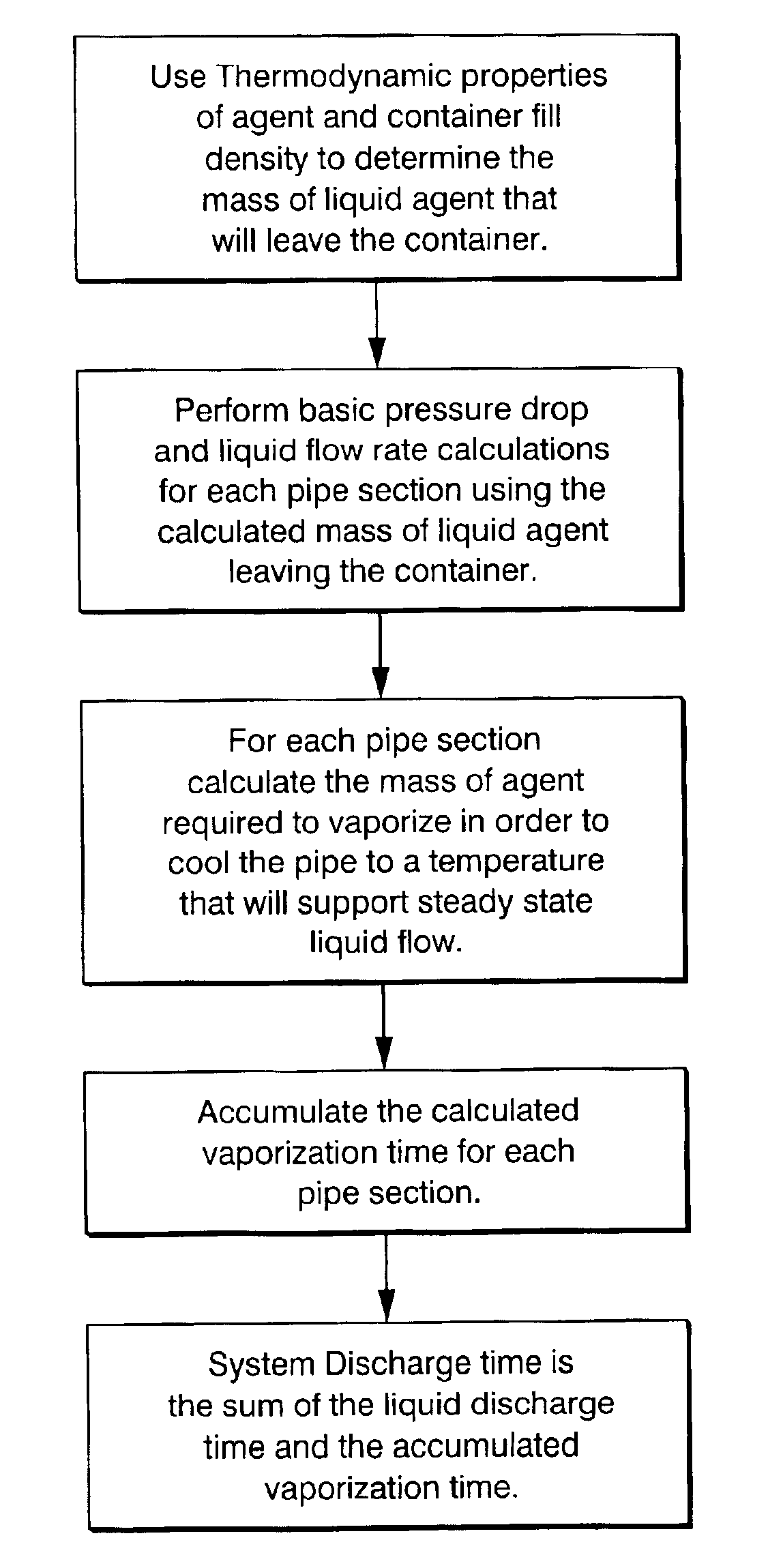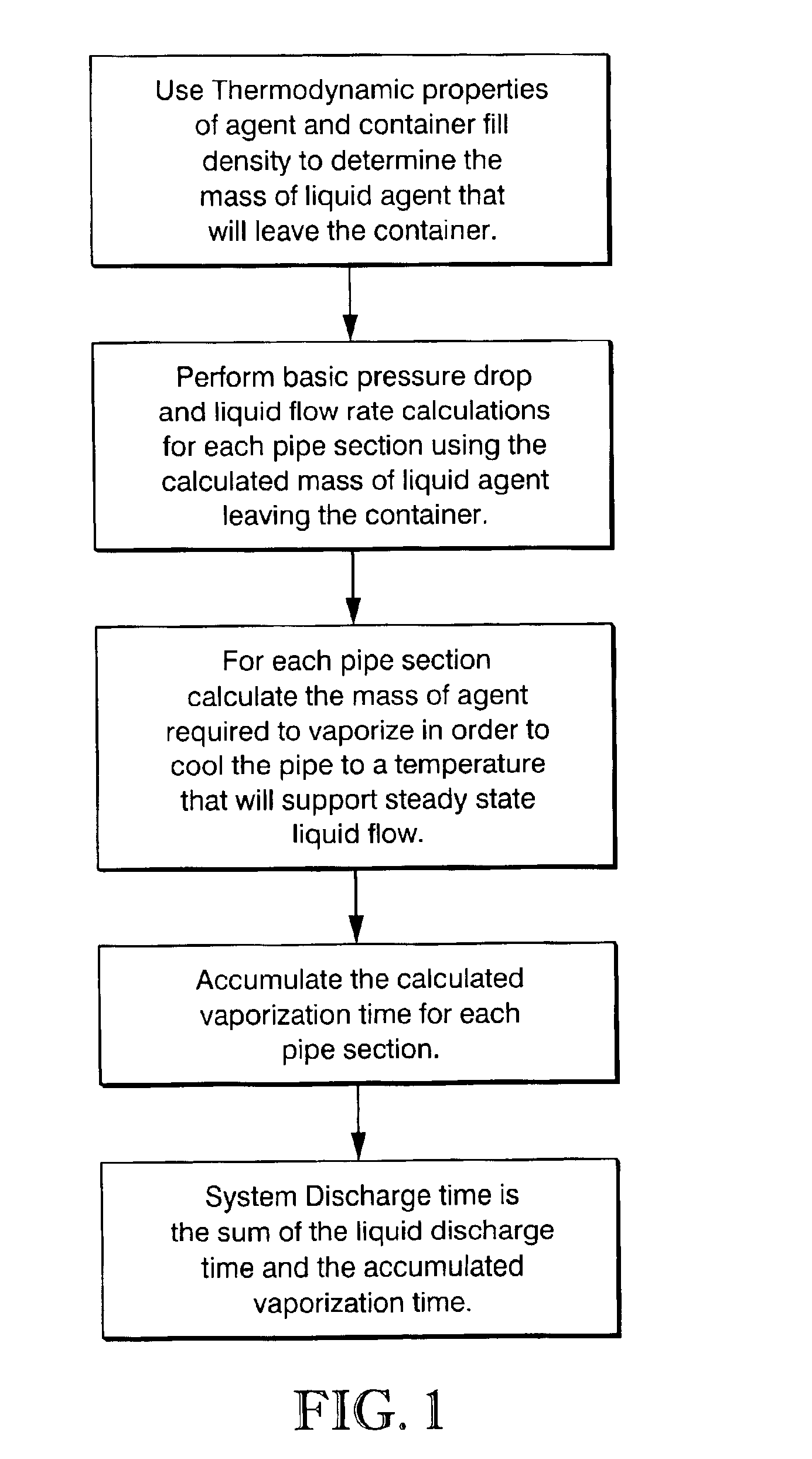Retrofitted non-Halon fire suppression system and method of retrofitting existing Halon based systems
a non-halon fire suppression and retrofitting technology, applied in fire rescue, dental surgery, medical science, etc., can solve the problems of affecting the replacement or retrofitting of halon 1301 fire suppression systems, affecting the safety of individuals in the protective zone, and affecting the safety of the environmen
- Summary
- Abstract
- Description
- Claims
- Application Information
AI Technical Summary
Benefits of technology
Problems solved by technology
Method used
Image
Examples
examples 1 and 2
[0054]A 10-second discharge test was conducted using a Class-A polymer such as ABS plastic. The required agent concentration in the test cell was 7% by volume. The fire extinguished at the 10-minute time limit.
[0055]A 22-second discharge test was conducted using the same Class-A polymer ABS plastic. The agent concentration was increased to 7.4% by volume. The fire also extinguished at the 10minute time limit.
[0056]Both tests resulted in extinguishment at the same time and only the agent concentration and agent discharge time changed. Therefore, formula [I] can be applied to determine the critical averaging time span for the ABS plastic.
[0057]Since C+ represents the additional percentage (percent change) of agent concentration for equivalent 10-second discharge performance:
C+=((7.4% / 7.0%)−1)×100=6% increase.
Thus:[0058]TCRIT=0.5×(((TD−10) / (C+ / 100))+TD)[0059]TCRIT=0.5×(((20−10) / (6% / 100))+20)[0060]TCRIT=93.3 seconds
[0061]Once TCRIT is known, then C+ can be determined for fire suppres...
example 3
[0066]If it is determined that for a given room volume, 1000 lbs. of HFC-125 must be delivered to that room within the conventional maximum time of 10 seconds in order to obtain a necessary concentration of suppressant agent in the room, a piping arrangement that was installed to deliver a requisite amount of Halon 1301 to the room would in fact restrict the flow of the HFC-125 such that agent discharge time would be of the order of 15 seconds rather than 10 seconds. After input of the parameters of the piping system into the Fike ECARO-25 computer program, the program carries out an iterative process to provide the installer with information regarding the additional amount of HFC-125 that must be furnished at the most efficient agent discharge time.
[0067]An iterative calculation process in accordance with equations I and II performed using the inputs described in this example is performed until the residue “error” results in less that 1 lb. agent differential.
[0068]The following ta...
PUM
 Login to View More
Login to View More Abstract
Description
Claims
Application Information
 Login to View More
Login to View More - R&D
- Intellectual Property
- Life Sciences
- Materials
- Tech Scout
- Unparalleled Data Quality
- Higher Quality Content
- 60% Fewer Hallucinations
Browse by: Latest US Patents, China's latest patents, Technical Efficacy Thesaurus, Application Domain, Technology Topic, Popular Technical Reports.
© 2025 PatSnap. All rights reserved.Legal|Privacy policy|Modern Slavery Act Transparency Statement|Sitemap|About US| Contact US: help@patsnap.com


